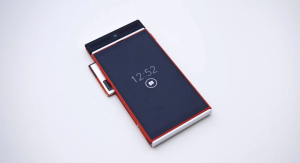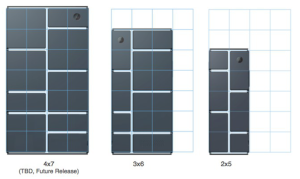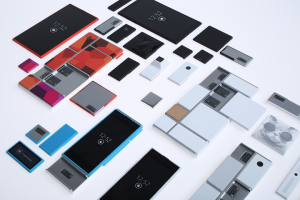 So what is Project Ara?. It is a do-it-yourself smartphone made by Google, in which you choose the features you want on your phone. Basically it is a grey-structural frame or smartphone chassis (called an endoskeleton or endo for short), where you add the parts (modules) you want on the structural frame to make it a phone. They can be easily inserted and removed. Another way of saying what is Project Ara, it is a platform which enables users (
So what is Project Ara?. It is a do-it-yourself smartphone made by Google, in which you choose the features you want on your phone. Basically it is a grey-structural frame or smartphone chassis (called an endoskeleton or endo for short), where you add the parts (modules) you want on the structural frame to make it a phone. They can be easily inserted and removed. Another way of saying what is Project Ara, it is a platform which enables users (not mobile phone manufacturers) to create their own smartphone which is tailored to their preferences of what they want on their phone. It was introduced so that people don’t need to buy a new phone, if not the parts or modules for their phone. Meaning for example, if you dropped the phone on the floor accidentally and the phone’s screen broked, then you don’t need to buy a new phone, if not you can replace the old screen with a new screen. Similar if you wanted a 32GB memory and not a 4GB one, you can replace the latter with the former. Project Ara has basically lowered the barrier of phones from manufacturers (e.g. LG or Samsung) to include developers outside of manufacturers. You can either a buy a complete Ara phone, configure one from scratch or buy additional modules (parts) from the Ara module marketplace (store). The modules also feature user-replaceable-covers, meaning if you want a cat printed on your module, you can do so. The release date of the product has somewhat varied by sources. According to Google’s own Project Ara website, they have not announced a release date yet, other than a market pilot in 2015. Others like for example, TechRadar have said that Google is thinking of releasing it in early 2015. It will come with small (2 x 5), medium (3 x 6) and large (4 x 7) sizes. The price? Basically users will buy the chassis and the basic kit they need for US$50 (£29; €36), that includes $15 for the Endo frame (chassis), $15 for the display, $5 for a battery, $10 for the main Application Processor module, and $5 for a Wi-Fi unit. These are just the cost of materials and aren’t what users will actually pay for. In addition, they will expect a flourishing component ecosystem that will drive down prices and offer users more options for pricing. The project initiated at Motorola Mobility, when it was then part of Google. When Google sold Motorola to Lenovo, they retained Project Ara, as part of its Android division. The phones will run Android. Google says, the phone is aimed at six billion of the world’s seven billion people. Five billion of them having ordinary basic feature phones and one billion of them having smartphones.
Images:
Sources:


